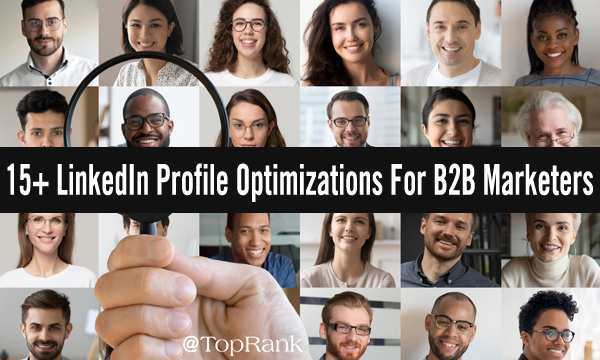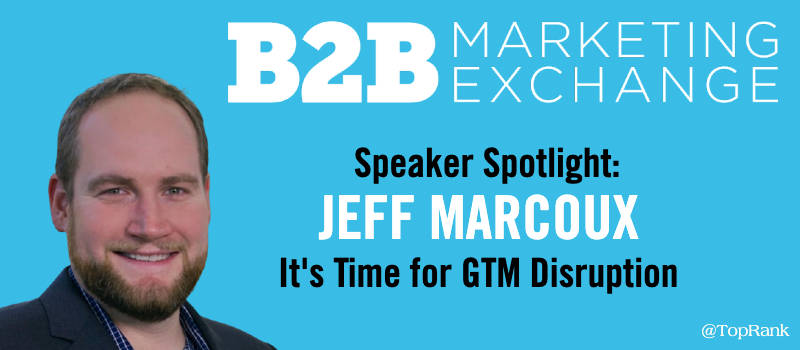
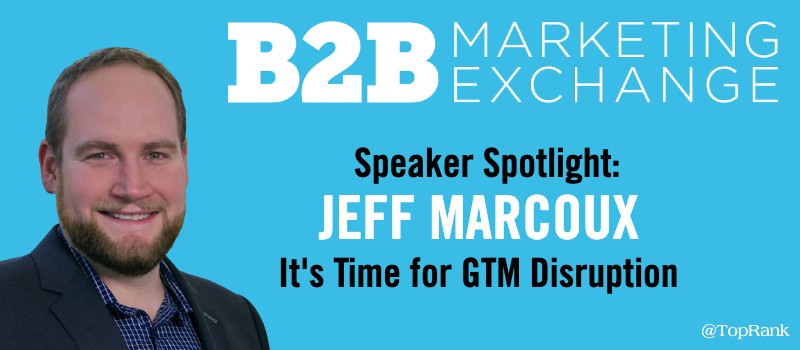
Our
B2B Marketing Exchange Speaker Spotlight is back with none other than
Jeff Marcoux, CMO at
Bombora, a provider of Intent data for B2B sales and marketing. With a conference theme of Performance Plus, Jeff is a great choice for a B2BMX keynote speaker with his extensive background in tech and enterprise B2B Marketing. I first met Jeff when he was a CMO Lead, Worldwide Enterprise Marketing at Microsoft in 2015 and was kind enough to educate us all in the art and science of
predictive analytics. Jeff has continued on his path as a sophisticated B2B marketer in senior marketing leadership roles, giving back as an adjunct professor in marketing and starting his own go to market consultancy. At
B2BMX, Jeff will be keynoting on the need for B2B marketers to disrupt their Go to Market approach to more effectively engage the entire account as companies dealing with economic uncertainty. This interview is a bit of a preview of his talk or a summary in case you don't make it to B2BMX.
Tell us about your role as CMO at Bombora Jeff: I was a Bombora customer back at TTEC and I was a customer when I was at Icertis. I've always used it in my teaching, like for UC Irvine and Oregon State University. I've used them when I was doing some fractional CMO work and when I was doing a lot of advisory work with accounts, trying to figure out intent data. I have always been a fan and a champion as a customer, and they wanted me to come in and essentially do what I was doing as kind of an evangelist advocate for the brand naturally, but to replicate that internally. A lot of people don't know this about Bombora, but we have three distinct business units to some extent. We've got the intent data side that everybody know about. We also have a massive audience solutions business where we provide data to most of the big B2B holding companies and major brands. And then we have a whole channel partner ecosystem where people tend to see our stuff, like in 6sense and solutions like that. There are a lot of different pieces in the role from being a customer evangelist to now being the CMO, architecting a rev op function that is focused holistically on the business, pivoting the marketing team to focus on opportunity and revenue in a full funnel focus. It's all those different pieces coming together We created the function of segment marketing in addition to product marketing, which is kind of an interesting motion where the segment role is focused on the go to market motion for sales. So they're kind of the right hand of sales versus where product is focused on leaning into product, helping us drive voice of customer, ensuring we're actually following best practices on commercialization releases. The other part I'm implementing right now is kind of, I call it "wagile", a waterfall agile kind of combination. Certain elements in marketing have to be waterfall, right? Certain things have to happen for others to happen, but you can still execute that in a natural manner.
While people know Bombora, it's very obvious that people don't truly understand intent data - where it comes from, why and how it's different.
For a lot of people it's just a feature in an ABM orchestration motion. I view it and have used it very differently, where it actually becomes like a fundamental element to business strategy. So, how do I start to help the market realize that it's more than just prioritizing accounts and putting ads in front of them? Or telling your sellers who to call first and all the different use cases that you can deploy it against? Everything from competitive intelligence to M&A to pipeline forecasting, to your content strategy plus all kinds of stuff around events, I'm just barely scratching the surface on those. Most people just want to know, are these are the accounts that you say I should go after?
At B2BMX you'll be giving a keynote on the need for disruption in B2B marketing and go to market - what are some of the biggest changes driving the need for change? Jeff: The need for disruption? The need for change? A lot of what's playing out in our traditional playbooks isn't going to work as we go forward. I've been one to say controversially, that I think marketing automation is kind of dying and on its way out, just like the old traditional lead nurture flow. If a buyer is a good fit, if they're showing intent on our product or our brand, when do you want to talk to them? The answer's yesterday, right? Like, they don't want to wait for weeks. The key things that kind of stand out are, we're seeing longer sales cycles. And given current macroeconomic trends, we're seeing more people, more touches being necessary, significantly more people, which marketing greatly misunderstands. Obviously tighter budgets, budgets are trimmed down. The misalignment still continues to happen a lot in marketing between sales and marketing. You'd think we'd figure it out. I can say even when I was consulting, this was probably happened 95% of the time.
At the end of the day, business doesn't really give a crap about MQLs. They care about opportunities They care about closing on revenue.
Not having direct conversations and understanding your business continues to kill marketers. And then I still feel marketers are starting to get to the motion. We still do fluffy metrics. We spent forever beating the MQL into business' heads, but at the end of the day, business doesn't really give a crap about MQLs. They care about opportunities They care about closing on revenue. They care about identifying churn, all those other kinds of things. Matt Dixon's recent book, The Jolt Effect talks about how the fear of messing up is real in leading to massive indecision. Marketing needs to, if they haven't already, start to step up and take a bigger, full funnel approach to everything that they're doing. Because a lot of marketing departments are still limited to the top of the funnel. They're not looking at velocity and conversion rates. They're not looking at helping post-purchase. It's still shocking how after all these years it's like, "oh, we think we should be doing all these things, but we're not."
Let's drill down on the idea of full funnel engagement. Can you expand on how marketers can make the shift? Jeff: So the first thing is, you have to change your metrics. If you're only focused on MQLs and top of funnel stuff, that's how you're gonna...compensation drives behavior. So, if that's what my budget's based on, I'm not gonna look down funnel when you align When I move the SDR onto our demand gen team, now the leader of that demand gen team is not about doing a webinar, it's not about checking a box. It's about, do we think that this is the best return on not only our investment, but also our effort, which that's become a big talk track for me is ROE.
Do we agree this is the best thing for us to be focusing our time on? Versus marketing doing a flurry of activities to hit a number that doesn't necessarily align with the business number.
What I love about it is, if we truly think that this webinar is the thing that's the best use of our time, or this first party event is really important let's direct our SDR resources to get people to sign up, get people to register, whatever that is. Because holistically, we believe this is what's going to get us to the opportunity number. That as opposed to, I'm doing a flurry of activity and hoping, you know, that it'll turn out okay.
Under what timeframe do you hold an effort like a webinar accountable and measurable? What role does content repurposing play for long, slow burn impact outside of the short term? Jeff: So it's interesting, I've always been a fan of kind of marquee, big rock content strategies where it's big material pieces that truly deliver value that can be cut into a lot of different, smaller pieces. They can live for extended periods of time. I still am a big fan of that. I think at the same time, we can look at some of these discreet pieces, and if we believe that they're going to have that long burn, then they're worth looking at. Simple things like, tying two things together. I could build a webinar that I run live every week that is available to my SDRs to target anyone who's showing intent on Bombora, right? Then if two people show up, or if one person shows up, or if 10 people show up, that's a win, right, if they're a good fit for us. If they're showing intent on us. Those could be turning into real opportunities really fast. That versus if I do something on a topic and I need 150 registrants or a thousand registrants, the mindset shift is different. It's like the effort is basically the same, but the shift on quality versus the quantity as well as how do you create those repeatable motions to get that long burn, to your point. I've actually now built out a cadence of things that we can do to equip the SDRs for that kind of stuff or like with our customers. I'm starting down this whole series on other ways you can use intent data. Like, using it for your event strategy, using it for your pre-year and post, using it for your content strategy, measuring your brand health, all these different kinds of things that people aren't doing - like how, how your agency should be strategically providing you insight and things like that. Especially with the trend of media buying shifting back in house. So, those are long burn, right? That's a piece of collateral that will live for a long period of time because the fundamental data doesn't change, but the way in which you think about it, interpret it does.
What are some best practices for measuring a brand's health against their Ideal Customer Profile? Jeff: I'm still a fan of FIRE campaigns - I call it FIT, FIR and FIRE campaigns is what you could be running. You have those that are a fit for your company based on your ICP definition. And there's a whole new vein. Fred Reichheld, the creator of the Net Promoter score, had a really interesting concept that I loved, which was he hates how basically bastardized NPS has gotten. So he released a new book and his comment was, we kind of do this whole fit profile wrong and what you really should be looking at is, what does it cost to acquire a promoter for your business?
It's not who you win most with, but where does the most customer lifetime value come from?
That's a big shift for marketers in the ICP world of, here's what the technographic, firmographic, or maybe psychographic data needs to look like. I might win more, but is that the best use of effort in terms of the longtime health of the business? So you have your FIT campaigns, right? They're a good fit for us. Then you have FIR - fit, intent and recency. So they're a good fit, they're showing intent, and that intent is headed in the right direction. And it's sustained. Then the E at the end of it is engagement, right? They're engaging with my brand, they're clicking on my ads, they're on my website, right? What's interesting, and growing up in the product marketing and demand gen space, I was always a brand pessimist. It was like, those are fluffy metrics. But now, Bombora's data is really interesting in this vein - you can put in your target account list, that ICP. Then when I run a campaign against any of those, I can look at number one, my brand versus my competitor's brands in the market just from intent with the FIT profile that I actually care about. I don't care about the whole market. I care about who I want to sell to, that's number one. I can see that health over time. Then when I run a campaign, I can see that the topic category of like ABM or whatever the topic is that I am trying to create buzz about. Did I actually see a material lift in that? And then did that also correlate to one with my brand? I can actually now measure that and see it visually as opposed to all the traditional trackers. And then if you overlay that with Bombora's tag or a first party tag, it de-anonymizes then, right? Not only am I measuring out in the world, seeing if that category shift and seeing if my brand shifted with the people I actually care about. Then you can answer the question, did they actually come to my site? Are they engaging? All those kinds of things. That's how you should be measuring brand. That's a great example of how you can truly measure the market you care about that has active interest in your brand.
How can B2B marketers do a better job of engaging the full account in their go to market? Jeff: That's interesting, so it varies by deal size, et cetera, as you go through it, but there's also too many people. We're seeing seven to nine and upwards of 10 to 12 in medium to enterprise size companies. But if you go beyond that, there's diminishing returns and it just takes longer. And your win rate decreases with that. What's also interesting is the journey that people are going through - who engages when through your buyer's journey. As marketers, we tend to be like, that's obvious, except for the fact that most of us are like, "we're going to target the whole demand unit from day one", and that's not right. Like procurement and finance come at different stages, CISO's come in at different stages through a deal cycle. So you need to actually map out and understand who comes in when. Who are the key champions when? Where do you start when you win? Then who has to be involved in this? There's all kinds of great data from Gong and others. And you can start see things like, oh, if you have four more contacts, your win rate can increase by X. If you have a VP, it increases by Y. But the way in which you start to do that is by mapping that journey.
Let's look into Jeff's crystal ball when it comes to the future of ABM and go to market. What should marketers be focusing on most in 2023? Jeff: In 2023, I'm guessing this is going to be a rough year. I'll call it a correction as opposed to "the sky is falling" in the market. That said, it's created an atmosphere of apprehension. So for marketing, lean in on metrics that actually matter. Understand the job to be done for your business. I think the marketers who do that are gonna start to be more successful.
For marketing, lean in on metrics that actually matter. Understand the job to be done for your business.
I think getting out of your head in some of the old world disciplines that we've spent a lot of time in like, lead scoring models and nurture programs are the greatest things since slice bread. You've gotta start to back out and think about, this account based everything, right? If you're not tailoring your stuff to accounts that you know are a good fit for you, however you define it, or if you're not thinking about utilizing some level of intent data to prioritize your time, you're just shooting in the dark and hoping people find you with broad brand campaigns.
Most people's budgets have been trimmed and reduced. So the question is not, how do you be Coke to the world, but how do you be Coke to the brands that matter to you?
I think there's going to be a piece on efficiency and a kind of velocity that markers are going to have to lean into. I also think if I pause on lead scoring for a second, I think there needs to be a mental mind shift in what makes something good. And ready. That's kind of the coupling with SDRs where lead scoring could and should probably shift to likelihood to win motions, not likelihood to take a meeting or an opportunity.
Enterprise marketers are the worst at making things complicated, way more complicated than they need to be.
I think there's a whole realm of rethinking, I think we also have to get out of our heads. Enterprise marketers are the worst at making things complicated, way more complicated than they need to be. I try to be a simple guy and to me it's like, less is more except for pizza and paychecks, right? Attribution models and all kinds of this crazy stuff. W attribution models and this and that. At the end of the day, if you've got a good relationship with your sales team and you're aligned to business metrics that matter, you can be really freaking simple. It's like, which leads came from marketing? Which opportunities came from marketing we wouldn't have otherwise ? Marketing originated. Which ones didn't come from us, but we heavily influenced? Heavily influenced and they took a significant action with us? Great. Then which opportunities do we just lightly touch? Some, add some emails, things like that. I've got my three tiers of stuff, but what matters to the business? Did we actually hit our number? And then hopefully how much of that came from marketing?
I want marketing leaning in to get their bonus on helping to ensure that sales hits their number no matter what.
At the end of the day, if you're focused on the number as a whole, you look at for the business, compensation drives behavior. I want marketing leaning in to get their bonus on helping to ensure that sales hits their number no matter what. So if they're not focused on full funnel, if they're not focused on leaning in to the opportunities, creating custom content and facilitating pipeline through the whole journey, they're going to focus at the top of the funnel and they get defensive. "I take credit for this versus you." No, no, we're all focused on this number. We all need that to succeed. We, we'll track it because we want to be smarter and intelligent about it. But I need you to succeed. So it's just a different mind shift of "us versus them." It's like I, as a CEO, I as the CMO want my team working together to hit the overall number as opposed to pointing fingers and taking credit. That's where you see a lot of the friction happening.
Thanks Jeff! You can connect with Jeff on all things related to ABM and Go to Market on
LinkedIn, Twitter
@jeffmarcoux or his company website at
Bombora.com.
If you're reading this before February 28th, you can also see Jeff live at the B2B Marketing Exchange, Monday, February 27, 2023 4:50 PM to 5:30 in the Camelback Ballroom where he'll be
presenting:
Well, There Goes My Buyer's Journey... In this session, we will dive into the shift in thinking and execution necessary to engage the whole account in your GTM. Jeff Marcoux will ensure your branding efforts drive effective impact at target accounts to structuring campaign alignment and engaging your buying group to execute with your SDR team beyond the first meeting. The time to disrupt yourself and your GTM is now... before you are disrupted.
 There are actually a few B2B Marketing Exchange tickets left
There are actually a few B2B Marketing Exchange tickets left, so if you are in the Scottsdale area or want to make a last minute trip to learn from your favorite B2B Marketing pros, use the discount code,
TopRank25 for 25% off!
More info here. Of course if you'd like to connect with me
@leeodden or my Director of Agency Marketing, Katelyn Drake
@kb_drake, we'll also be attending B2BMX and would love to meet you!
The post B2BMX Speaker Spotlight: Jeff Marcoux on B2B Go To Market (GTM) Disruption appeared first on B2B Marketing Blog - TopRank®.
Article Source:
http://bathseoexpert.blogspot.com/2023/02/b2bmx-speaker-spotlight-jeff-marcoux-on.html
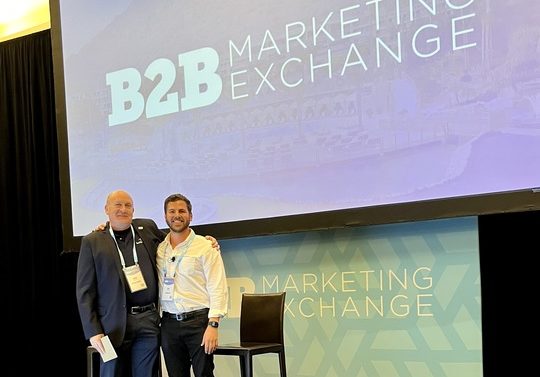
 As a B2B marketer, we know that Account-Based Marketing (ABM) and intent data are closely related in the sense that intent data is often used as a key input to inform and guide ABM strategies, but let's dive in on how they work together to boost sales intelligence and drive conversion. Intent data refers to data signals that indicate a person or organization's intent to purchase a product or service. This can include things like website visits, content downloads, search queries, and other online behaviors that suggest a potential buyer is actively researching a particular solution. By analyzing this data, marketers can gain insights into which companies or individuals are likely to be interested in their products or services and tailor their outreach accordingly. ABM, on the other hand, is a strategic approach to marketing that focuses on targeting high-value accounts with personalized, highly-relevant messaging and content. ABM strategies aim to build strong relationships with key decision-makers at these accounts and ultimately drive revenue growth by converting them into customers. In today's session on Cracking The Code: How ABM & Intent Data Boost Sales Intelligence & Fuel Success at B2BMX, Dan Cafiero of Seagate Technology and TechTarget CMO John Steinert shared how they are working together to crack the code of AMB and intent data. Here are the three key takeaways from the presentation: 1 - Do Not Wait for Buyers to be In-Market
As a B2B marketer, we know that Account-Based Marketing (ABM) and intent data are closely related in the sense that intent data is often used as a key input to inform and guide ABM strategies, but let's dive in on how they work together to boost sales intelligence and drive conversion. Intent data refers to data signals that indicate a person or organization's intent to purchase a product or service. This can include things like website visits, content downloads, search queries, and other online behaviors that suggest a potential buyer is actively researching a particular solution. By analyzing this data, marketers can gain insights into which companies or individuals are likely to be interested in their products or services and tailor their outreach accordingly. ABM, on the other hand, is a strategic approach to marketing that focuses on targeting high-value accounts with personalized, highly-relevant messaging and content. ABM strategies aim to build strong relationships with key decision-makers at these accounts and ultimately drive revenue growth by converting them into customers. In today's session on Cracking The Code: How ABM & Intent Data Boost Sales Intelligence & Fuel Success at B2BMX, Dan Cafiero of Seagate Technology and TechTarget CMO John Steinert shared how they are working together to crack the code of AMB and intent data. Here are the three key takeaways from the presentation: 1 - Do Not Wait for Buyers to be In-Market
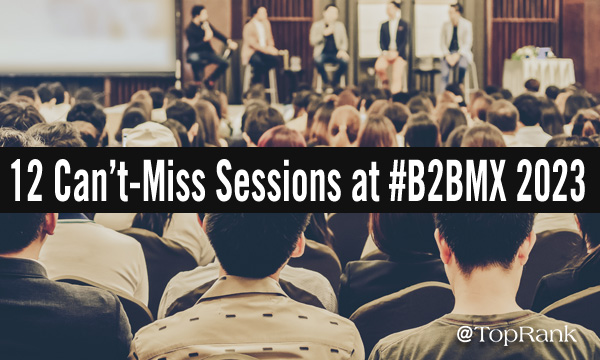

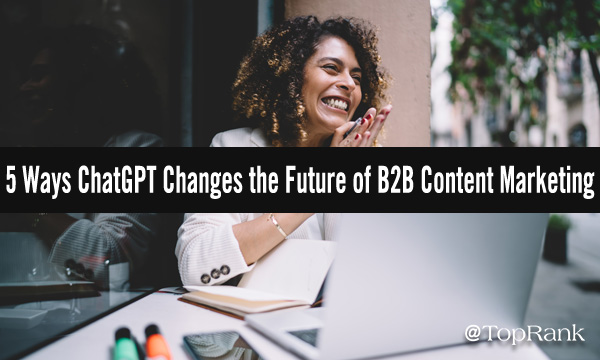

 Our B2B Marketing Exchange Speaker Spotlight is back with none other than
Our B2B Marketing Exchange Speaker Spotlight is back with none other than 
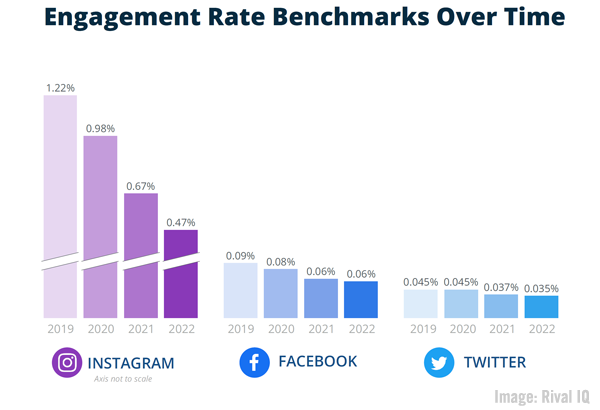
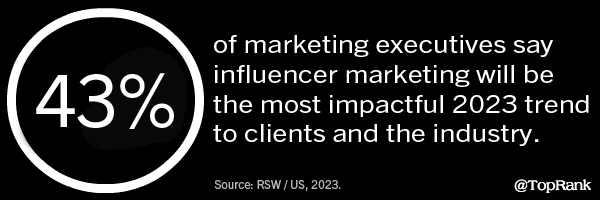 Google Slides gets a ChatGPT plug-in – and it’s like a cheat mode for presentations A generative AI-powered plug-in known as MagicSlides has launched as a third-party add-on for Google's popular online presentation creation tool Google Slides, allowing marketers to swiftly create slide decks with the help of AI — a feature that has yet to arrive natively to Google Slides.
Google Slides gets a ChatGPT plug-in – and it’s like a cheat mode for presentations A generative AI-powered plug-in known as MagicSlides has launched as a third-party add-on for Google's popular online presentation creation tool Google Slides, allowing marketers to swiftly create slide decks with the help of AI — a feature that has yet to arrive natively to Google Slides. 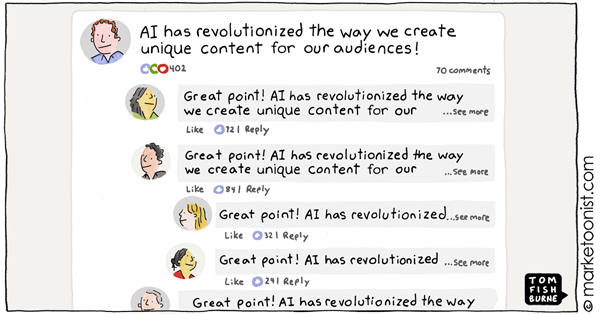 A lighthearted look at “AI-Generated Sameness” by Marketoonist Tom Fishburne —
A lighthearted look at “AI-Generated Sameness” by Marketoonist Tom Fishburne — 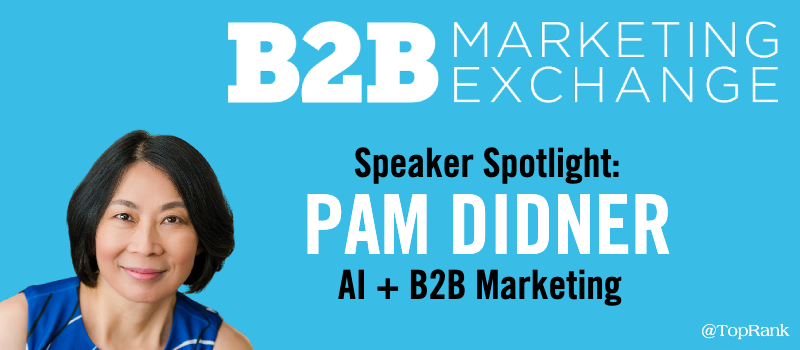
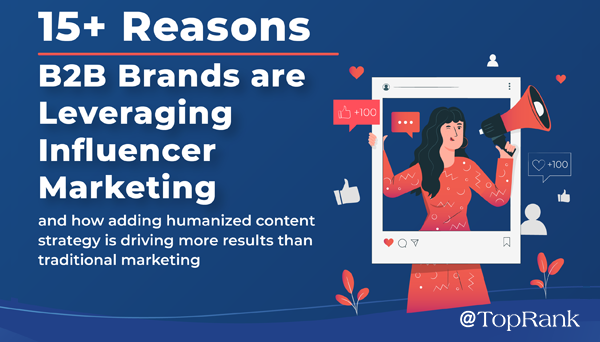

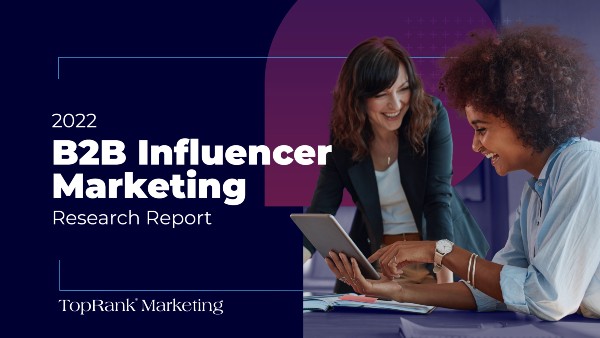
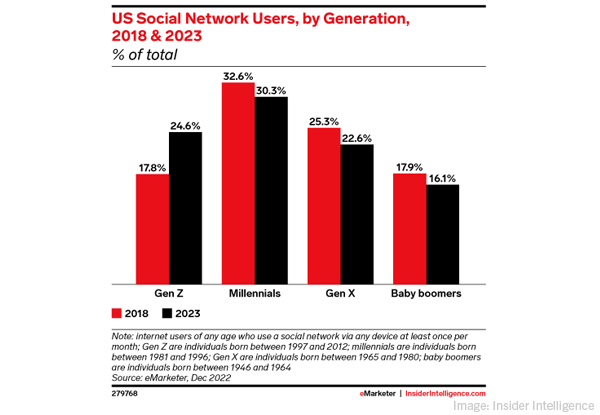
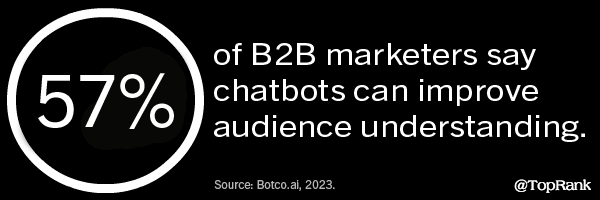 Ad Execs Maintaining, Boosting 2023 Ad Budgets: Advertisers More Optimistic Than Agencies 54 percent of advertising executives has said that they planned to keep ad budgets steady during 2023, with 30 percent expecting an increase, while 10 percent planned to decrease ad budget spending, according to newly-published survey data of interest to B2B marketers.
Ad Execs Maintaining, Boosting 2023 Ad Budgets: Advertisers More Optimistic Than Agencies 54 percent of advertising executives has said that they planned to keep ad budgets steady during 2023, with 30 percent expecting an increase, while 10 percent planned to decrease ad budget spending, according to newly-published survey data of interest to B2B marketers. 